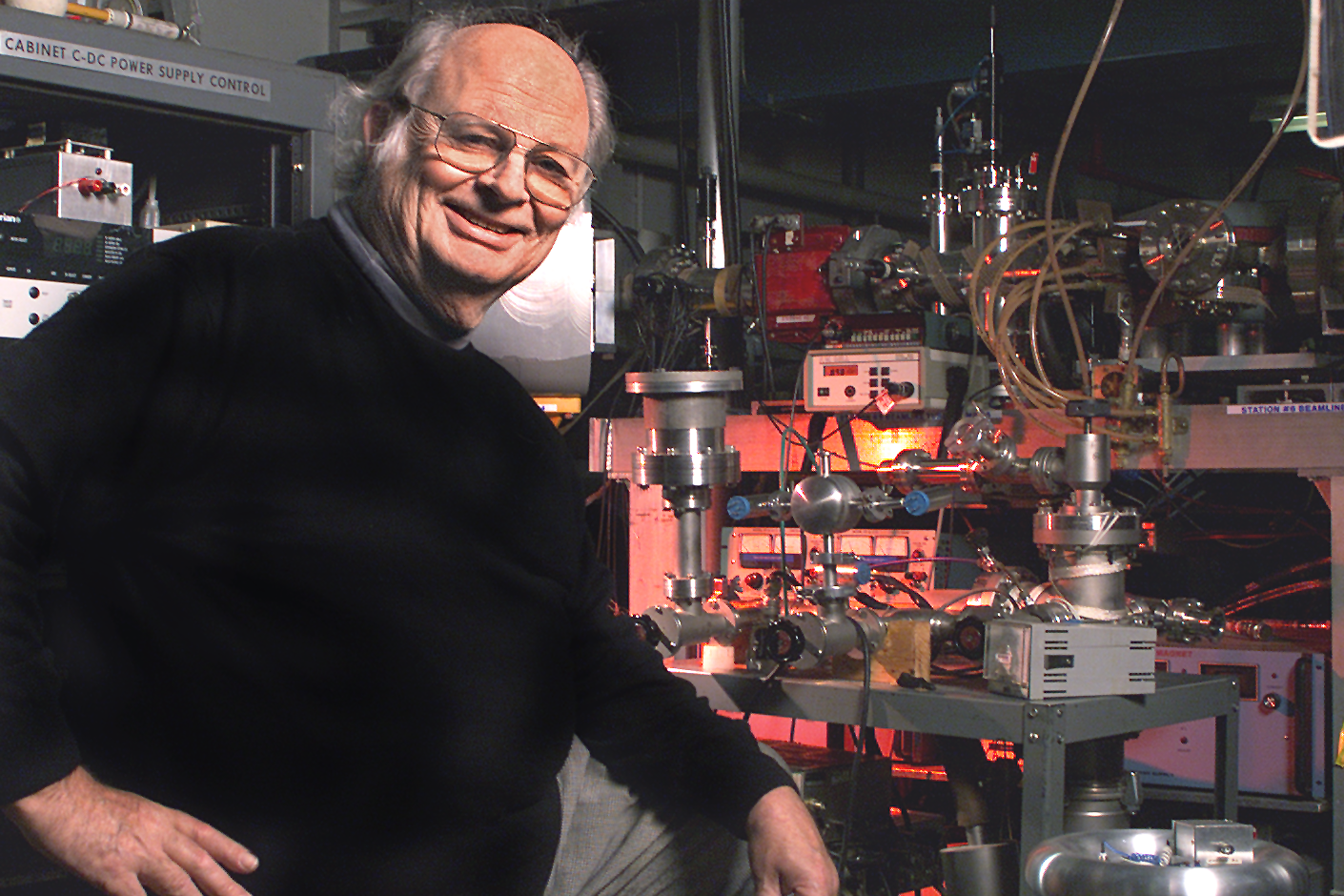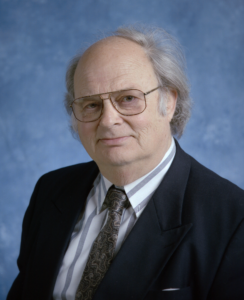
1986
Pioneering chemical dynamics
ORNL scientists pioneered the field of chemical dynamics, laying the foundation for research that received the Nobel Prize in Chemistry in 1986.
Foundation for chemistry Nobel

Sheldon Datz
Sheldon Datz’s 50-year career as an innovator in the fields of chemistry and atomic physics at ORNL was defined by his knack for seeing the big picture and his ability to synthesize and expand upon developments across diverse disciplines.
In a 1999 interview with the ORNL Reporter, Datz described his mildly eccentric approach to scientific inquiry: “I’m kind of peculiar in that I have moved from one area to another. I started out in chemistry, but as I’ve seen holes in science, I’ve tried to fill them, and maybe in not the same way as I filled the last one.”
A chemist by training, Datz joined the laboratory’s Chemistry Division in 1951 after graduating Columbia University with a B.S. in chemistry and an M.A. in physical chemistry. He received his Ph.D. in physical chemistry from the University of Tennessee in 1960. He led the Atomic and Molecular Collisions Group in the Chemistry Division from 1960 to 1981. His research interest started drifting toward atomic physics following a Fulbright Senior Research Fellowship abroad during 1962-1963.
Early in his career at the lab, Datz and chemist Ellison Taylor developed a novel crossed-molecular-beam technique for studying chemical reactions. These studies pioneered the field of chemical dynamics and laid the foundation for research that led to a Nobel Prize in chemistry for three other scientists in 1986.
One of those scientists, Nobel Laureate John C. Polanyi of the University of Toronto, later observed that “Dr. Datz is a powerhouse of originality and venturesome science.
“The dynamism and daring that made Datz a pioneer of crossed-beam chemistry quite clearly characterizes the man and all his work.”
Datz went on to win the Davisson-Germer Prize in Atomic or Surface Physics in 1998 and the Fermi Award in 2000, along with Sidney Drell of the Stanford Linear Accelerator Center and Herbert York of the University of California’s Institute on Global Conflict and Cooperation. —Jim Pearce